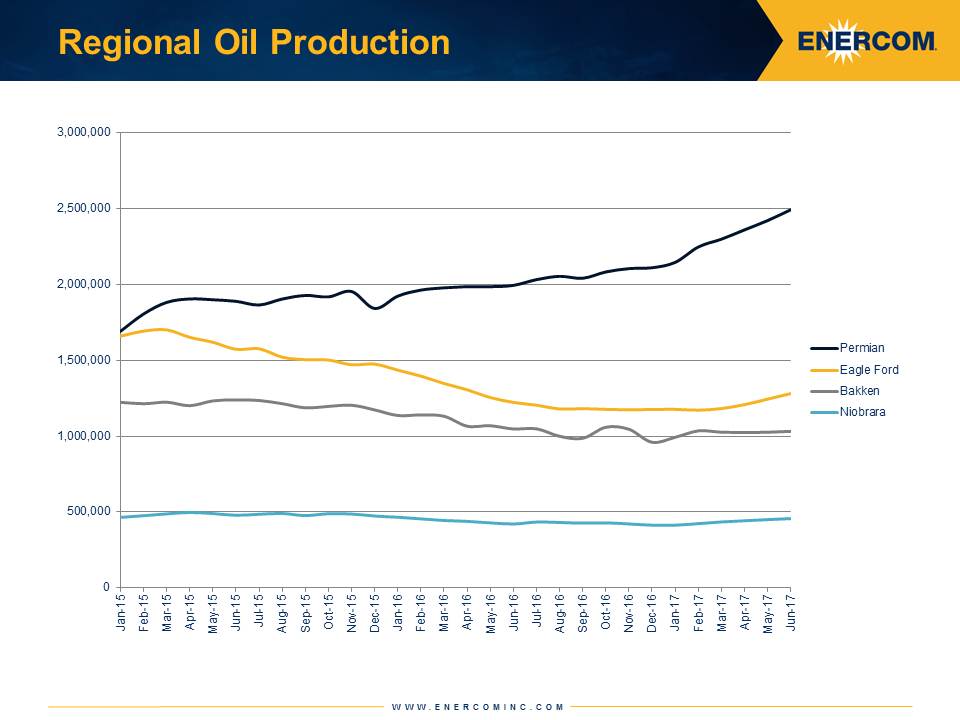9,600 wells came online in March
The Railroad Commission of Texas released oil and gas production statistics this week, outlining hydrocarbon production in March.
Preliminary figure indicate production is down compared to this time last year. Oil production in March was 77.3 MMBBL, compared to 87.2 MMBBL in March 2016. Natural gas production was 608 Bcf, down from the 710 Bcf produced last year.
It is important to emphasize that the values for March 2017 are preliminary, and will be updated as information becomes available. For reference, preliminary March 2016 oil and gas production was 77.7 MMBBL and 638 Bcf. This indicates that actual production may have been down somewhat from last year, but was probably not down 10 MMBBL.
Production in March 2017 came from 177,719 oil wells and 90,804 gas wells, up from the 169,008 oil wells and 89,918 gas wells producing in February. While some of this growth is undoubtedly due to new wells, it is likely that much of the growth in well count is due to reactivation of wells. It seems unlikely that the ~400 rigs active in Texas in March would be solely responsible for adding nearly 9,600 wells.
Eagle Ford Counties rank first in oil, gas, condensate production
Karnes County, in the Eagle Ford, produced the most oil in Texas, pumping nearly 7 million barrels in March. Because activity is somewhat more concentrated in the Eagle Ford than the Permian, Eagle Ford counties make up three of the top four oil-producing counties in Texas. Permian production, on the other hand, is more spread out but much larger. In fact, according to the EIA oil production in the Permian is now double that of the Eagle Ford.
Eagle Ford counties actually rank first in oil, gas and condensate production. The aforementioned Karnes County produces the most oil in Texas, while Webb County is first in gas production and Dimmit County produces the most condensate.



